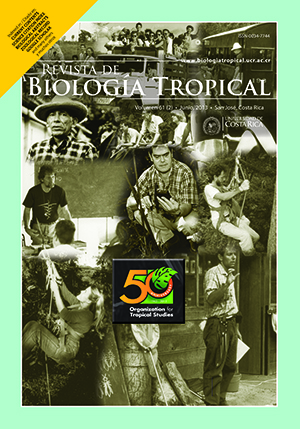Abstract
The Piping Plover (Charadrius melodus) is a migratory endangered species that arrives, along with a great number of other winter migratory birds, to Boca Ciega every year. In spite of the importance of this ecosystem, these species, are threatened by the current habitat change caused by the dredging activities in the area. With the aim to generate new information about the importance of this area during winter, we studied C. melodus activities during the winter season in Laguna Madre, from December 2009 to March 2010. Our objectives were: 1) determine the importance of the area during winter, 2) describe C. melodus ethology, feeding substrate preferences and food items, 3) to analyze and describe the sympatric diversity associated with C. melodus. A total of ninety nine individuals were observed during the monitoring. The Cochran and Kendall test showed a high significance of the species with the substrate and signs tests using a binomial distribution that indicated a high preference for algal type of substrate. The highest activity recorded for this species during this winter season was feeding. The principal food items found in sediments were larvae of Diptera: Chironomidae and Ephydridae. The sympatric species of C. melodus were two families of Charadriiforms: Scolopacidae (nine species) and Charadriidae (two species). We concluded that this is an important area for feeding, protection and rest sites for this species, and its protection and management is recommended.##plugins.facebook.comentarios##
Downloads
Download data is not yet available.






